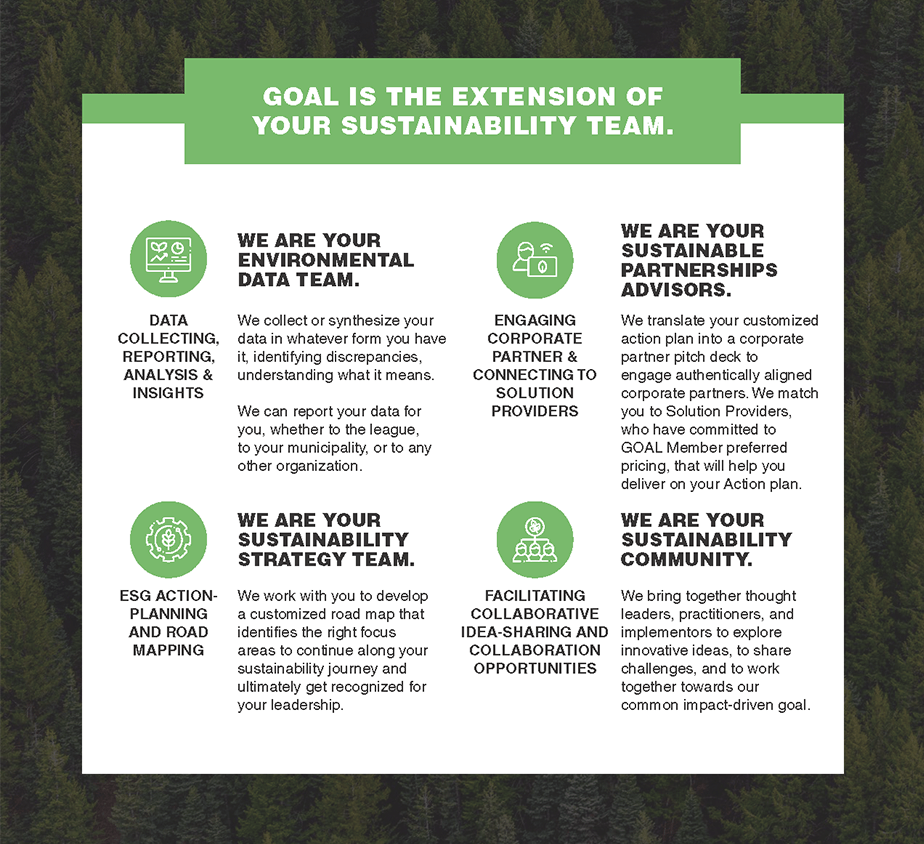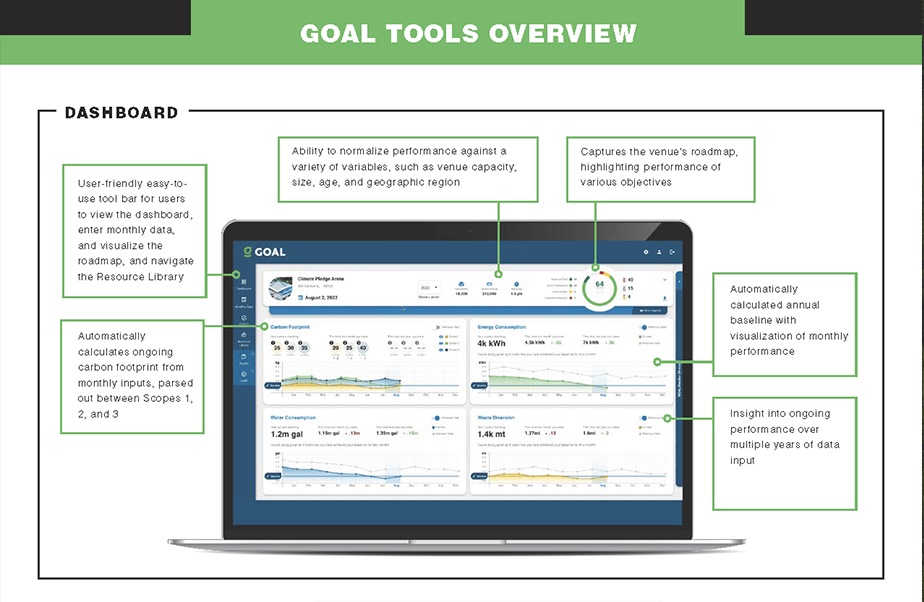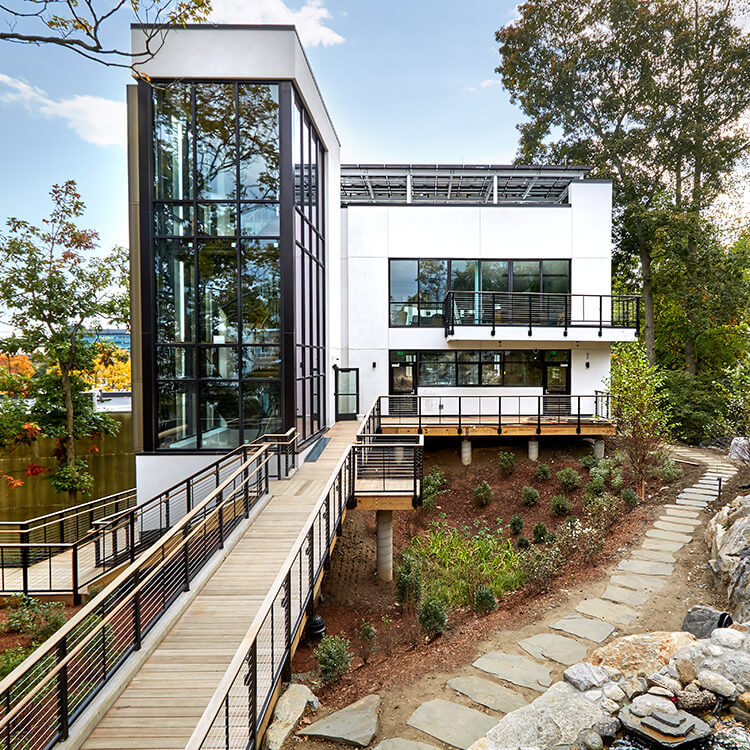“The music is loud and the fans are all wearing their gear, and it’s a festive atmosphere,” says Trevor Braun, a Seattle Kraken fan who frequently hosts clients in the BNBuilders suite. “The sustainability aspect isn’t really apparent at first, but our guests are always impressed when they notice things like the compostable plates and utensils. It’s definitely a plus for them: They’re glad to not contribute to the cycle of waste.”
Named for the Climate Pledge, an agreement in which companies promise to reach net-zero annual carbon emissions by 2040, the building is the world’s first International Living Future Institute Net-Zero Carbon Certified arena. Since it targets zero waste and net zero carbon, all aspects of its operation are as sustainable as possible, from the ice made of rainwater, to the electric Zamboni powered by renewable energy, to the low-flow fixtures in the restrooms. Even the hot dogs are grilled over renewable electric heat, and single-use plastics are banned throughout the building.







